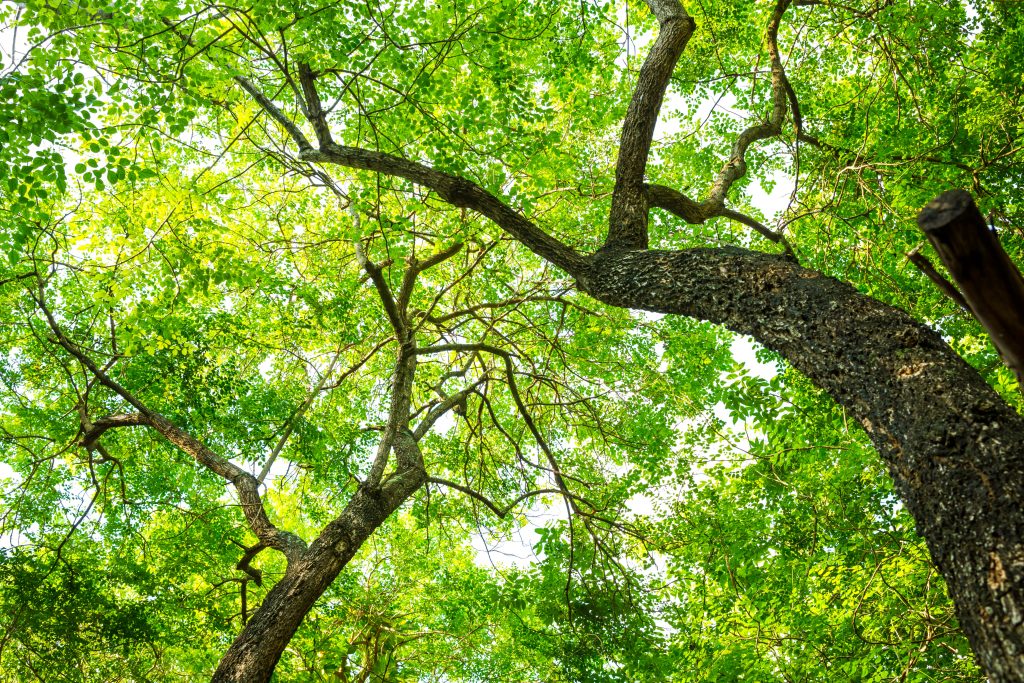Protecting trees from insects and pests is crucial for ensuring their overall health, longevity, and the vitality of the entire ecosystem they support. Trees are not only valuable aesthetically but also ecologically, providing numerous benefits to both humans and the environment. When trees are affected by insects and pests, it can have far-reaching consequences that extend beyond the individual tree. Here’s why protecting trees from insects and pests is of paramount importance:

In conclusion, the importance of protecting trees from insects and pests goes beyond the individual tree’s health. It encompasses the well-being of the environment, wildlife, air quality, aesthetics, and the overall quality of life. By taking measures to prevent and manage pest infestations, property owners contribute to the longevity and resilience of trees, ensuring that their benefits are enjoyed by current and future generations.
Several common types of insects and pests can damage trees, compromising their health and overall well-being. These pests can vary depending on the tree species, location, and environmental conditions. Here are some of the most prevalent types of tree-damaging insects and pests, along with explanations of their impact:

**1. Bark Beetles: Bark beetles are small insects that burrow into the bark of trees, creating tunnels and galleries. They can introduce fungal pathogens that weaken the tree’s vascular system, leading to tree decline and mortality. Common species include mountain pine beetle and emerald ash borer.
**2. Aphids: Aphids are small, soft-bodied insects that feed on tree sap by piercing the leaves and stems with their mouthparts. They excrete a sugary substance called honeydew, which can attract sooty mold and interfere with photosynthesis. Aphid infestations can cause stunted growth and leaf curling.
**3. Scale Insects: Scale insects are immobile pests that attach themselves to tree branches and leaves, sucking out plant fluids. They create a protective covering that resembles scales or shells. Severe scale infestations can weaken trees, cause leaf yellowing, and reduce overall vitality.
**4. Caterpillars: Caterpillars, the larval stage of butterflies and moths, can defoliate trees by consuming leaves. Gypsy moths and tent caterpillars are examples of species known for causing significant defoliation, which can stress trees and hinder their growth.
**5. Whiteflies: Whiteflies are tiny insects that cluster on the undersides of leaves. They feed on plant sap and excrete honeydew, leading to sooty mold growth. Whiteflies weaken trees and can transmit plant viruses, causing leaf yellowing and premature leaf drop.
**6. Leaf Miners: Leaf miners are larvae of various insect species that tunnel through leaves, leaving distinctive patterns or trails. Their feeding disrupts leaf function, reduces photosynthesis, and weakens the overall health of the tree.
**7. Fungus and Pathogens: While not insects, fungal pathogens can severely damage trees. Examples include Dutch elm disease, which affects elm trees, and oak wilt, which affects oak trees. These diseases can lead to wilting, leaf loss, and even tree death.
**8. Emerald Ash Borer: This invasive beetle species targets ash trees and can cause significant damage by tunneling beneath the bark, disrupting the tree’s nutrient and water transport systems. Infested trees display canopy dieback and increased susceptibility to other stressors.
**9. Bagworms: Bagworms are caterpillar larvae that build protective cases made of silk and plant material. They attach these cases to tree branches and feed on leaves. Severe infestations can defoliate trees and weaken their structure.
**10. Spider Mites: Spider mites are tiny arachnids that feed on the sap of trees, causing stippled or discolored leaves and webbing. They thrive in hot and dry conditions and can rapidly multiply, leading to reduced tree health.
**11. Japanese Beetles: These beetles feed on the foliage of various tree species, skeletonizing leaves and causing severe defoliation. They are particularly damaging in large numbers and can lead to stress and decline in affected trees.
It’s important to identify these pests early and take appropriate action to manage their populations. Integrated pest management (IPM) strategies, which combine various approaches including cultural practices, natural predators, and targeted chemical treatments, can help mitigate the damage caused by these pests and maintain the health of your trees.
Recognizing the signs of pest infestation in trees is crucial for early intervention and effective pest management. Detecting infestations early allows you to take appropriate measures to prevent further damage and preserve the health of your trees. Here are common signs to watch for:

Regularly inspecting your trees for these signs can help you catch pest infestations early, making it easier to address the issue and minimize potential damage. If you’re uncertain about the cause of any observed changes in your trees, consulting with an arborist or tree care professional can provide valuable insights and recommendations for treatment.
Murray is a city situated on the Wasatch Front in the core of Salt Lake Valley in the U.S. state of Utah. Named for territorial governor Eli Murray, it is the state's fourteenth largest city. According to the 2020 census, Murray had a population of 50,637. Murray shares borders with Taylorsville, Holladay, South Salt Lake and West Jordan, Utah. Once teeming with heavy industry, Murray's industrial sector now has little trace and has been replaced by major mercantile sectors. Known for its central location in Salt Lake County, Murray has been called the Hub of Salt Lake County. Unlike most of its neighboring communities, Murray operates its own police, fire, power, water, library, and parks and recreation departments and has its own school district. While maintaining many of its own services, Murray has one of the lowest city tax rates in the state.
Murray Oakes, Grant Park, Southwood Park, Murray Park, Murray Park Restrooms, Willow Pond Park, Neighborhood Veterinary Care
We had a great experience with TruCo! They were well priced, responsive and prompt. Michael was a pleasure to work with and gave us advice on which plants to put in where we took out our ugly old shrubs. I would highly recommend this company!!!
TruCo Services gets 5 stars from us for customer service. We experienced a few issues with their services this last year and Rob Eccles in senior management, stepped in and immediately handled our issues. He was very committed to making sure they understood our expectations and would execute to make us happy.
I work for a property management company and have the pleasure of working with Rob at a community in Sandy. He has been incredible to work with and always responds in a timely manner. He knows all the homeowners by name and address and is aware of all the "problem" areas when it comes to sprinklers. I never have to worry about following up with him because he always reaches out to provide me with an update. If you're looking to work with someone who takes pride in their job, is professional, and can solve the worst landscaping problems thrown your way, Rob is your guy. Thank you, Rob for all you do!
We have used Truco at 2 of the complexes we manage, they have been great to work with. Good quality service, outstanding customer service with good communication. That's hard to find these days. I highly recommend them. Travis has been awesome to work with.
We use TruCo for a majority of our properties and our home. While other landscaping companies we use come and go for various reasons like cost, communication issues, work performance, etc., TruCo is always consistent in price and work. Also, Rob is the best.